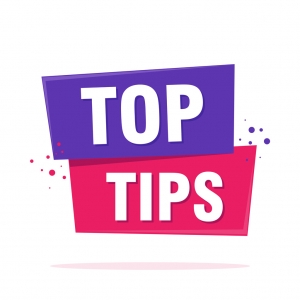Join our online community and be inspired to achieve your goals!
VIEW OUR FACEBOOK PAGEWork from home productivity hacks

TIP 1 – Create a routine and stick to it: Maintaining a regular routine of waking up, working, leisure time, exercise, going to bed etc. is even more important when working from home. Establish your working hours and stick to them as much as possible. These might be different to what you do in the office – depending on your employer’s expectations and your other commitments. This is important for productivity and also helpful for anyone who’s home with you because they’ll know when they should leave you alone to work.
TIP 2 – Pretend you’re going to work: The mental association we have with working and our place of work can drive productivity. There is no reason to lose that feeling when working remotely. Simply do all the things you would to prepare to go into the office. That includes setting your alarm, showering, getting dressed, eating breakfast, buying your coffee and preparing/buying lunch as you normally would.
TIP 3 – Choose a dedicated workspace: This doesn’t have to be a dedicated office, but it should be an area that mentally prepares you for work. Store and keep everything you need to work there and ideally (if you have the room) make it separate from where you relax or sleep.
TIP 4 – Close email (from time to time): It’s important to stay in close contact with colleagues, especially in teams working across different locations, or when working on complex projects. However, sometimes it helps to close email for a period, to work uninterrupted on the task at hand. Many people find dealing with email a constant struggle so allocate specific times to check it. Ensure your manager or colleagues are aware of your plan, and they know how to reach you if something urgent comes up.
TIP 5 – Turn off notifications: This is a helpful way to avoid technology distractions. Having your phone, computer or smart phone notifying you every time you receive an email, message or social media update constantly interrupts your thoughts and it then takes time to re-focus. This can greatly affect your overall productivity across the day.
TIP 6 – Put your phone away: If it’s important they’ll leave a message. Smartphones have revolutionised how we do many things – but they’re also one of the greatest threats to productivity! Try physically putting your phone away for short periods of time. Switching it to aeroplane or do not disturb mode or turning it off can help, but sometimes having your phone out of sight means it’s also out of mind.
TIP 7 – Focus: Try to focus on one thing at a time. Take advantage of peak energy and use those times to get the ‘hard’ stuff done. Write a to-do list at the end of every day (or first thing in the morning) so you know where your focus needs to be for the day ahead. Planning out your week on a Sunday night is also a great idea; and turning off technology makes a significant contribution to succeeding in this area.
TIP 8 – Set time limits: This is a great productivity hack for large projects or tasks you procrastinate about. Break them into smaller chunks, set time limits, and just get it done. Use a timer set at 30-minute intervals. Start working and focus on one activity for the 30 minutes before taking a short one-minute break to refocus.
TIP 9 – Grab more time: If you’re home schooling or entertaining toddlers that are usually in care, it can be difficult to be productive all day. Try getting up one or two hours earlier. If you’re not a morning person, try smaller increments. Even five minutes a day adds up to more than half an hour after just one week. This will be two and a half hours within a month – sounds simple but it works! Alternatively use naptime to work on important tasks, or tag team with a partner (if possible) to work in shifts.
TIP 10 – Use video conferencing: When teams work remotely, it’s harder to maintain cohesion and collaboration so schedule video meetings as often as you would face-to-face meetings. Ensure you have a good headset and clear background. Be present on every call and respond to messages quickly. If you’re a manager, over-communicate what’s expected and check in regularly to see if team members need support. For some teams, having a morning catch-up where everyone shares their plans for the day can create a great sense of purpose.
TIP 11 – Don’t go stir-crazy: Now that you’re spending most of your time at home, get outside as much as possible for a walk or some exercise. Try catching up with friends and family via FaceTime or WhatsApp. It’s important for our mental health. Work teams could maintain some ‘normal’ socialising by holding a virtual Friday afternoon drinks session, morning tea for someone’s birthday or a lunch via video conferencing. It might feel strange, but it will add some fun to an otherwise difficult time and remind us we’re in this together. Read our recent article about self-care and how important it is for preventing burnout and improving job performance – it’s particularly relevant at this time.
There may be added stresses and pressure in your life making it challenging to stay focused and productive during this time. Go easy on yourself and figure out what works best for you. Implement some (or all) of our tips and you might be surprised at just how much your productivity improves.
To find out more about how we can support people through uncertain times in their career, go to the Katie Roberts website.










